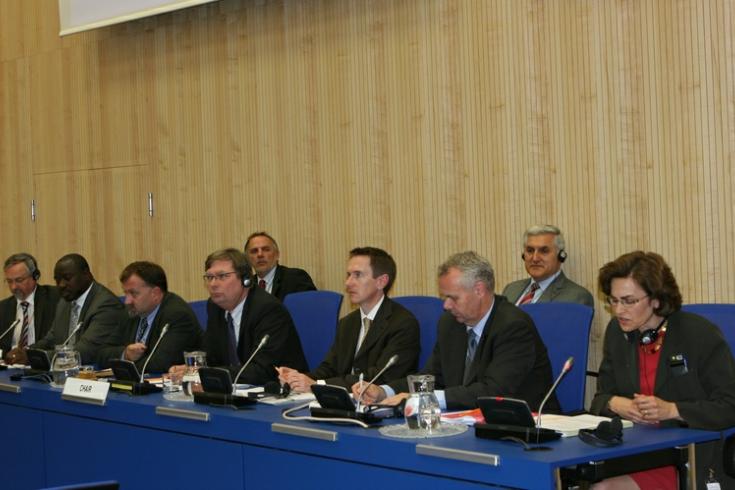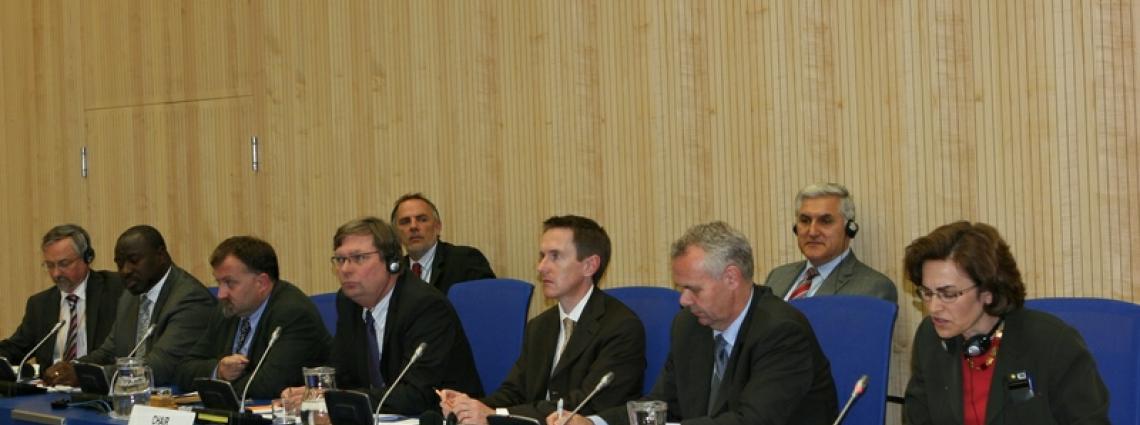Strengthened role of the wider scientific community in building test-ban verification
“We have tried to build upon the momentum from the International Scientific Studies Conference in 2009 (ISS09) when planning for the follow-up event, the Science and Technology 2011 (S&T2011) ,” Lassina Zerbo, the director of the International Data Centre (IDC) of the Preparatory Commission for the Comprehensive Nuclear-Test-Ban Treaty Organization (CTBTO) told an audience on 31 May 2010. “The wider scientific community can help us,” Zerbo said.
Continuing the effort while broadening the approach
Holly Given, scientific coordinator of the S&T2011, gave a briefing which laid out the objectives of next year’s conference, a continuation of previous efforts. Building upon the experiences of the 2006 Synergies with Science and the 2009 International Science Studies conferences, the 8-10 June 2011 conference will, among other things, highlight advances in science and technology, develop partnerships between stakeholders in the wider test-ban community, and consider wider applications and synergies with science of the Treaty’s verification regime.
Continuing the effort while broadening the approach
Holly Given, scientific coordinator of the S&T2011, gave a briefing which laid out the objectives of next year’s conference, a continuation of previous efforts. Building upon the experiences of the 2006 Synergies with Science and the 2009 International Science Studies conferences, the 8-10 June 2011 conference will, among other things, highlight advances in science and technology, develop partnerships between stakeholders in the wider test-ban community, and consider wider applications and synergies with science of the Treaty’s verification regime.

Holly Given (far right), scientific coordinator of the S&T 2011, gave a briefing which laid out the objectives of next year’s conference.
“In addition to the traditional scientific fields of seismology, oceanography, atmospheric sciences, nuclear physics, and on-site technologies, we plan to include scientists who specialize in multi-disciplinary earth observation, climate studies, and capacity development via open-source learning and information and communication technologies,” Given said.
International scientific community engagement necessary
“I think we are on the right track, both in having the fireworks at the conferences and in having the CTBTO maintaining key contacts with the scientific world in the time in between” said Hein Haak, the chairman of the CTBTO working group on verification issues.
International scientific community engagement necessary
“I think we are on the right track, both in having the fireworks at the conferences and in having the CTBTO maintaining key contacts with the scientific world in the time in between” said Hein Haak, the chairman of the CTBTO working group on verification issues.
Setting priorities for verification-related research
The Comprehensive Nuclear-Test-Ban Treaty (CTBT) bans all nuclear explosions. The CTBTO is building a 337-facility network to monitor the planet for compliance with the Treaty. When complete, seismic, hydroacoustic and infrasound stations will monitor underground, the oceans and the atmosphere. Radionuclide stations will sniff the air for any sign of a nuclear explosion. On-site inspections, involving information collection directly on the alleged or suspected site, constitute the final verification measure of the Treaty. The international scientific community has contributed to the development of the CTBT’s global verification regime before and after the Treaty’s inception.
Lessons learned and future potential
“The 2009 ISS conference generated a rich set of impressions, findings, and recommendations that continue to be studied by the CTBTO,” Given said. Following the unique opportunity for engaging in scientific exchange provided by ISS09, the CTBTO is undertaking a review of the results, with a particular emphasis on the organization’s verification mandate. Preliminary outcomes of this review were recently published on the CTBTO website.
Lessons learned and future potential
“The 2009 ISS conference generated a rich set of impressions, findings, and recommendations that continue to be studied by the CTBTO,” Given said. Following the unique opportunity for engaging in scientific exchange provided by ISS09, the CTBTO is undertaking a review of the results, with a particular emphasis on the organization’s verification mandate. Preliminary outcomes of this review were recently published on the CTBTO website.
